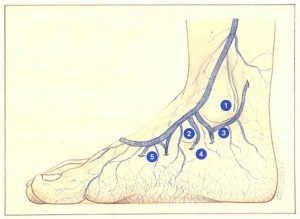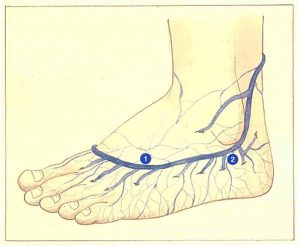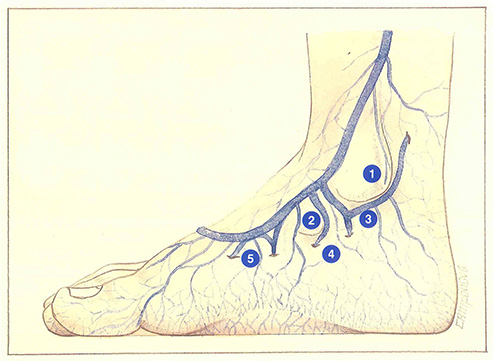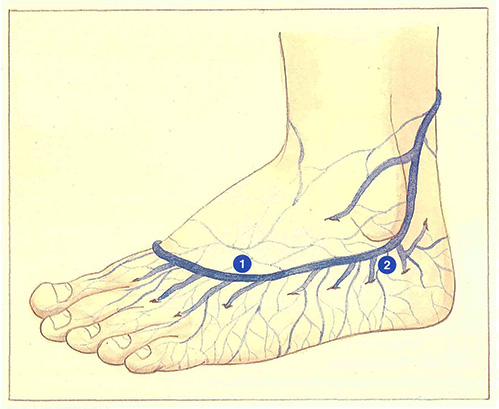Perforating veins of the foot
All the perforating veins of the foot are derived from the very large medial and lateral plantar veins.
Perforating veins of the medial surface of the foot, are the most developed (Figure 107). These veins can be divided into three groups, named in relation to a palpable bony landmark:
• Posterior group
This perimalleolar group comprises a main medial inframalleolar element (2 to 3 mm), which sometimes receives a perforating vein of the ankle, above the bimalleolar line, or a posterior saphenous branch.
• Median group
This group is situated around the tuberosity of the navicular bone. Exceptionally, posterior and median groups communicate via a “seton” perforating vein, which travels underneath the fascia without any relation to the medial plantar network.
• Anterior group
It projects over the first cuneiform or, more anteriorly, at the base of the first metatarsal.
Perforating veins of the lateral surface of the foot, are less developed (Figure 108). Two groups can be distinguished: a posterior, or calcaneal, group and an anterior, or metatarsal, group.


Finally, like Cockett. Kuster has proposed an extremely precise topography of these perforating veins, which, to our minds, does not take into account the extreme variability of their anatomical location. A classification based on palpable bony landmarks therefore seems more realistic.
Further reading
Bourgeret. Circulation locale. Procédé d’injection des veines. Note présentée à l’Académie des Sciences, 1885.
Gillot V. Veines plantaires et pompe veineuse. Phlébologie 1995, 48: 49-70.
Lejars F Les veines de la plante du pied. Archives de Physiologie, 1890.
May R., Partsch H., Straudesand R. Venae perforantes. Urban and Schwarzenberg, Munich, 1981.

